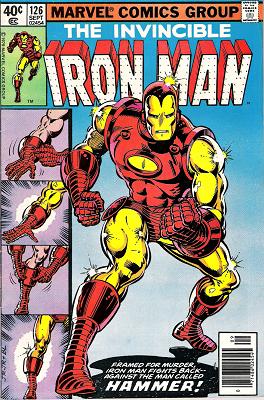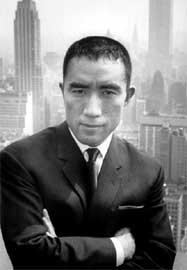Well, this conversation could so easily be about any male superhero, but I choose to go with one who’s highly visible at the moment (And is coincidently, a personal favourite of mine). I love meta narratives and metaphors about super heroes, mainly because I think they are influenced so much by the society and culture in which they were written, and in turn have a big influence on (primarily) younger men.

There he is, in his red and gold iron manly glory.
Now, for those of you unfamiliar with the character and history of the guy in the metal suit – it’s a story that started in 1963, in the context of the Vietnam war. The stories of Iron Man are strongly linked to the world and time in which they are set , more so than many other heroes. Iron Man is perhaps the most overt of cold war super heroes, protecting the interests of America as the invincible Iron Man, and also through the capitalist ideology of the man inside the suit, Tony Stark. In this the classic superhero double act is given an extra layer of meaning. In terms of masculinity Iron Man is also notable for the relationship between suit and wearer. The suit also keeps the man, Tony Stark alive, the machine keeping his damaged heart functioning. In this way Stark is dependent on the suit; in classic superhero style, it is his strength and his weakness.
Another thing I like about the Stark/Iron Man combo above some other superheroes is that the billionaire playboy industrialist weapons manufacturer (naturally) Tony Stark demonstrates a little more reflexive moral light and shade. While his actions as Iron Man are everything the actions of a superhero should be, Tony Stark is a different kettle of fish. He is conflicted about the uses of the technology he creates, and his character arc involves alcoholism and rehab.
I find the gender representation in popular comics fascinating, and I think they can be very instructive on the societies and cultures that create them, why they create them and what they inform and represent to those who consume them. For example I think it is telling that a superhero like Iron Man, with his problematic relationship to technologies of destruction emerged at the height of the cold war, and at a time when the war in Vietnam was burgeoning.
Tony Stark and Iron Man are representations of superheroic masculinity, and this is far from problematic. But, as far as the Marvel/DC stable of manly heroes goes, the Invincible Iron Man and his secret identity show a type of vulnerability that is different from Batman or Superman, a little more ambiguous and a little more reflective.
Unusually for this blog I’m going to end this entry with a quote from Wikipedia, (one of my great joys in writing this non-formal, non-academic blog is using wikipedia willy nilly) It’s referencing a Robert Genter, a historian of comics and super heroes:
According to historian Robert Genter, Stark is emasculated by his loss of autonomy as an inventor — a blow to his manhood symbolized by his chest wound — and “Iron Man centers on Stark’s inability to reconcile with this wound to his masculinity.” Stan Lee used the playboy side of Stark to restore the character’s sense of masculinity. Stark conquers women — either romantically or physically, and with female supervillains frequently both — and, writes Genter, “follows the lead of other cultural and literary figures such as Ian Fleming, Mickey Spillane, and Norman Mailer who made unregulated sexuality a form of authenticity.”
Good stuff huh, here is the wikipedia article on Iron Man.





